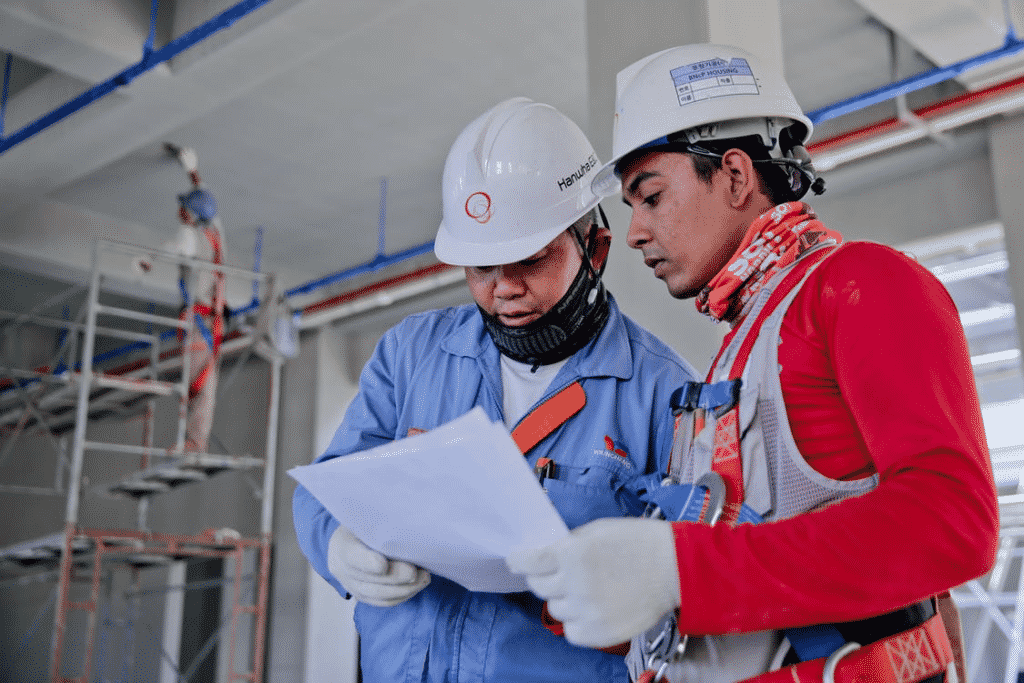What is an IIPP?
An IIPP, otherwise known as an Injury and Illness Prevention Program, is a foundational safety program specifically designed to work alongside standard business operations to keep employees safe. The California Code of Regulations (CCR) legally requires all employers with at least one employee to have a written IIPP. This regulation helps ensure employee safety and allows businesses to avoid the high costs of workplace injuries.
Related: Train-The-Trainer Model: What is it, Benefits, and Where to Start
Why Do You Need an IIPP?
Employers need to have an official IIPP to ensure that they are acting in compliance with federal mandates by the Occupational Safety and Health Administration (OSHA). But they are also in place to ensure that businesses are implementing an effective safety culture within their work environment. More importantly, employers don’t just need an IIPP; they should want one. After all, every business owner wants their employees to stay safe and remain productive without worrying about the costs of workplace injuries. Protecting workers’ health and safety while also shielding businesses from injury liability is why Cal/OSHA requires that companies implement and train their employees on these plans.
Additionally, businesses will want to have an effective IIPP in place because doing otherwise can result in expensive yearly fines. On the other hand, having an IIPP comes along with several other financial benefits, such as lowered insurance premiums.
The Eight Required Elements of IIPPs

IIPPs that are effective and able to meet the mandates put forth by OSHA include eight distinct sections. These are the IIPP development steps:
Responsibility
This section, the essential first step in IIPP development, is relatively straightforward and involves identifying the parties responsible for establishing your company’s safety plan. Whether you select one person or multiple people to fill this role, they should:
- Be identified in the written IIPP
- Have the full support of management
- Know about safety issues, hazards, and control measures
- Have the authority to implement and make corrections to the program
Compliance
In this section, employers will need to decide exactly how employees are supposed to comply with the rules and safety procedures. This process should include training plans, elements of positive recognition and disciplinary actions for those who do and don’t follow safety procedures, and additional compliance courses for employees who need them. It’s critical to also ensure that your IIPP does not discourage employees from coming forward to report any injuries.
Additionally, it’s wise to periodically review and update all of these rules and procedures to ensure that they properly reflect your workplace conditions.
Communication
This step involves creating effective communication systems to disseminate the information within the IIPP to all employees. This dissemination can be done through emails, meetings, memos, notices, training, regular newsletters, and group activities. By the end, all employees should:
- Know about the IIPP
- Understand their responsibility to comply with all of its rules and procedures
- Know how to report injuries or hazards both directly and anonymously
Employers should also develop a specialized health and safety committee that reviews accidents and can communicate with employees about the IIPP. This committee should:
- Meet at least quarterly
- Create written reports of incidents
- Review accidents, inspection results, and accident investigations
- Submit recommendations for IIPP changes or updates
- Consider employee recommendations
Hazard Assessment
This section is critical, though it largely also depends on the type of business you own and the industry that it operates in. Employers–with the help of experienced professionals trained for this type of work–should carefully go through, consider, and record all possible health and safety hazards that can potentially impact employees and the business at large.
Do you have a new business with employees who need training in safety, compliance, and workplace harassment prevention? Check out the fantastic services offered by ARROW UP or reach out to them today at info@arrowuptraining.com to learn more.
Accident/Exposure Investigation
When an accident occurs, investigations will be needed to determine what went wrong and what can be done to prevent future incidents. Documentation of these investigations should include names, dates, descriptions of incidents, and actions taken to correct involved hazards.
Hazard Correction
Once hazards have been clearly identified by employers, they must be corrected. This correction can include:
- Limiting exposure by removing personnel from the area
- Fixing the issue by eliminating risks and enacting protocols
- Ensure that those fixing the problem have the required personal protective equipment
Training and Investigation
All employees should be adequately trained on the IIPP rules, regulations, and protocols so that they know how to act safely and reduce the potential for injury on the job. Employers can reach out to outside trainers or can develop their own in-house training procedures.
Record Keeping
Workplaces must maintain a written IIPP along with documentation of all IIPP incidents along with other records. The documentation should include everything from company protocols and investigations to training and disciplinary write ups. All of these documents should be kept on file for a period of at least one year. Additionally, periodic inspections should be conducted to identify unsafe working conditions and practices. Once found, the issues should be corrected as quickly and effectively as possible
Related: What is OSHA, and What Does it Stand For?
IIPPs for Construction Companies

If your business happens to be situated within the construction industry, your IIPP will need to include some additional required elements along with the eight listed above. Such requirements include safety meetings conducted by site supervisors every ten working days and a written Code of Safe Practices that must be posted at every job site that the company is working on.
Related: What to Do in the Event of a Cal /OSHA Inspection
Communicate Your IIPP Plans
Once you’ve entirely written up your IIPP, you should be quick to disseminate it among all of your employees. Encourage them to speak their minds and freely ask questions to ensure that they understand the plan and its purpose in helping to keep them safe. Help to instill the mindset of “let’s do this right and follow the safety guidelines” among your employees by emphasizing the importance of protecting themselves, protecting their teams, and protecting the business– that is the Arrow Up way.
Are you a business owner currently on the lookout for superior quality online resources covering safety, compliance, and workplace harassment prevention? Check out the steller services offered by ARROW UP or reach out to them at info@arrowuptraining.com today to learn more.



